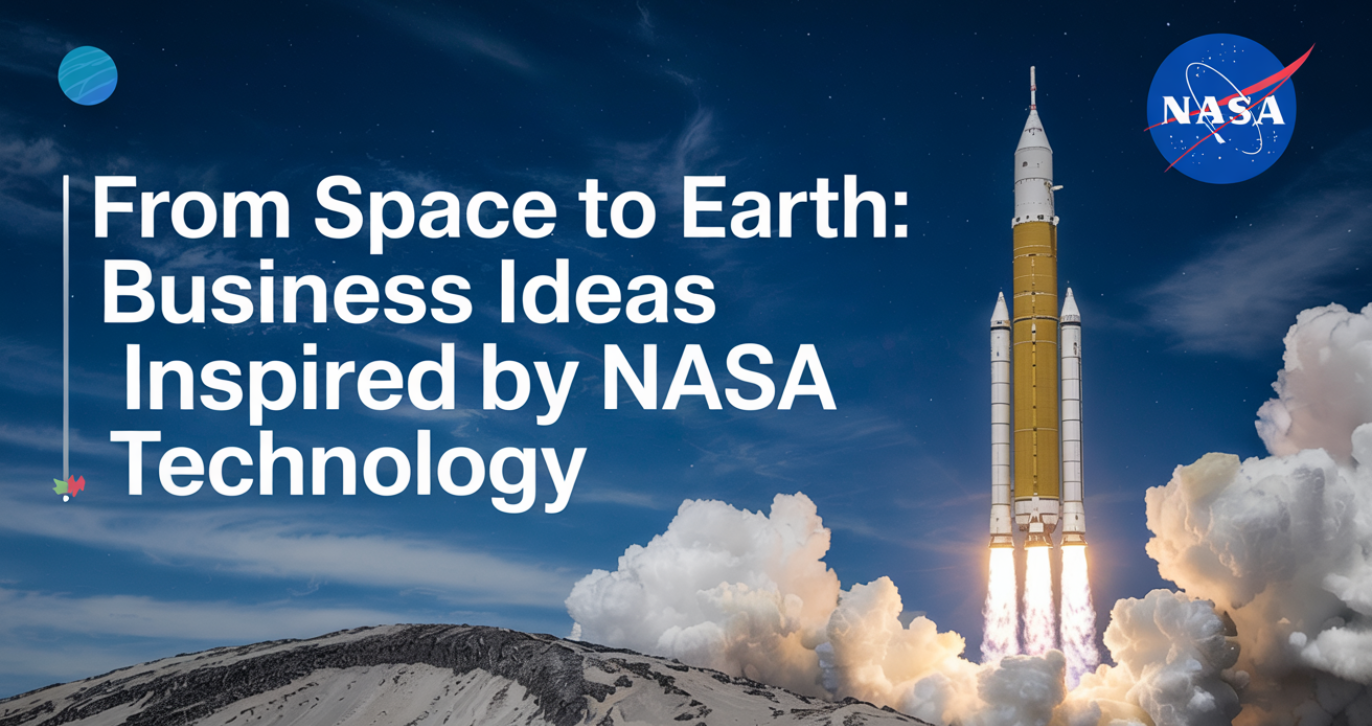NASA has been a well-known entity to many, working on the technological frontier for several decades, developing technologies that not only send humans into space but also have considerable applications on Earth. The following section will examine some business concepts based on NASA technology and the actual value that these technologies can deliver to the commercial sector.
NASA-inspired innovations
1. Sustainable and Smart Agriculture
Hydroponics research, aeroponics, and automated farming for space missions by NASA have traced the beginning of sustainable agricultural practices on Earth. Entrepreneurs can utilize these technologies to commence a business that deals with
- Vertical farming solutions by hydroponics or aeroponics
- Smart irrigation systems that help in the conservation of water
- Satellite data monitoring of soil and crop health
- Automated greenhouses with AI-driven climate control
These technologies help the entrepreneurial side of bringing about better efficiency in food production against environmental damage. Furthermore, smart farming methods can be applied to urban settings, which would allow cities to increase their degree of self-sufficiency concerning food production.
2. Advanced Water Purification Systems
NASA’s work on the filtration and purification of water systems for space missions has birthed advanced water treatment technologies. Applications include:
- Portable water purification units for outdoor and disaster relief
- Advanced water treatment technologies for home and commercial use
- Clean water initiatives in developing countries
Businesses can capitalize on these innovations by developing and distributing inexpensive and efficient water purification products to a global market. With the increasingly concerning trend of diminishing water resources, the integration of NASA-inspired water recycling technologies into municipal setups also opens potentially rewarding prospects for business.
3. Health and Biomedical Innovations
NASA’s research into human health in space environments and microgravity has contributed to numerous advances in medicine. These possibilities could be used by entrepreneurs to create
- Wearables for health monitoring that track vital signs
- Rehabilitation technologies to treat muscle and bone loss
- Telemedicine solutions for remote healthcare access
- Antimicrobial materials for hospitals and public places
Those would revolutionize the delivery of healthcare and improve outcomes worldwide. AI and machine learning techniques could be used by companies for the analysis of astronaut health data and the development of predictive analytics tools for early detection of diseases on Earth.
Read our Blogs: Sustainable Raw Material Sourcing for Manufacturing Entrepreneurs: Strategies and Supplier Networks
4. Robotics and Automation
A little explanation of what would be termed space robots would require the establishment of the animal that has operated on Earth. NASA’s advanced robotics programs are a manifestation of operations needed for space missions but have ample cross-pollination from these programs into compatible industry practices. Here is a potential endorsement list:
- Robot-assisted surgery and rehabilitation devices
- Automated warehouse and logistics solutions
- AI-driven manufacturing robots for enhanced productivity
- Smart home automation systems
Through NASA-engineered robotics, companies can provide an extra edge to people through efficiency, safety, and precision across various industrial sectors. Robotics could also lead to great developments in age-related activities, having assisted in daily matters for an aging population.
5. Energy Efficiency and Renewable Technologies
NASA’s inventions in solar panels, battery storage, and energy-efficient materials would find applications elsewhere. An entrepreneur may adapt any of such advanced applications to:
- High-efficiency solar panel manufacturing
- Battery storage advanced solutions for electric vehicles
- Home and business smart energy management systems
- Heat and sound-resistant insulating materials in construction
These green technologies help reduce the carbon footprint of consumers and industries. As climate change concerns grow immensely, businesses involved with implementing these products will eventually have an upper hand.
6. Space Tourism and Commercial Aerospace
With NASA’s sustained effort in space exploration, now the private sector has ventured into space tourism and commercial aerospace. These are some business ideas:
- Private space travel experiences
- Suborbital experiences from high-altitude flights
- Space-themed hotels and zero-gravity training centres
- Deployment services for commercial satellites
These companies will continue to experience exponential growth as space tourism overtakes other standards. Furthermore, the growing demand for space-related expedition experience may see companies capitalize on offering astronaut training simulations and immersive VR-based space travel experience products.
Also read: Importance of Fertilizer Market in the Agriculture Field
7. Food Technology and Preservation
NASA studies of space food preservation have assisted in developing various food processing and storage technologies. Among the business opportunities are:
- Long-lasting yet nutrition-packed packaged food for consumers
- Future advanced freeze-drying and vacuum-sealing technologies
- Sustainable food production involving lab-grown meat and plant-based alternatives
- Smart kitchen technologies to optimize meal preparation
Such developments relate to the rising demand of customers for foods that are convenient, nutritional, and green. Those same technologies could be adapted for use in military and emergency food supply chains, thereby opening up new markets for the businesses.
8. Smart Textiles and Wearable Technology
For NASA, heat-resistant, moisture-wicking, and self-cleaning fabrics have been developed for astronauts. These materials have favored the emergence of businesses in:
- Smart clothing with embedded biometric sensors
- Fire-retardant and climate-adaptive textiles
- Self-cleaning and antimicrobial fabrics.
9. Artificial Intelligence and Data Analytics
NASA uses AI and data analytics intensively for mission planning, satellite imaging, and autonomous spacecraft operations. Commercial exploits include:
- AI-powered business intelligence tools
- Predictive analytics for supply chain management
- Smart city solutions based on satellite data
- AI-driven cybersecurity solutions.
These applications of AI can help in streamlining operations and making decisions across the spectrum of industries. Companies can also develop response tools for disasters powered by AI, making the most of NASA’s satellite data to forecast and mitigate natural disasters.
10. 3D Printing and Manufacturing
NASA has extensively utilized 3D printing for rapid prototyping and manufacturing in space. This technology can benefit businesses engaged in the following activities:
- On-demand 3D printing services for other industries
- Design and manufacture of custom prosthetics and medical implants
- Sustainable construction with 3D printing materials
- Manufacturing of aerospace and automotive components.
The ability to minimize wastage of materials and production costs allows 3D printing to be a revolutionary approach in sustaining modern businesses. Furthermore, utilizing 3D printing with recycled materials helps on the road toward sustainability-centric business models.
Closing Thoughts
Technology transfers from NASA continue to present great opportunities. Activities from agriculture, through healthcare and energy, and into space tourism are qualified opportunities for entrepreneurial endeavors that take advantage of these innovations to produce meaningful and profitable ventures. Space-age tech will allow businesses to generate development, sustainability, and profit on Earth. Without a doubt, the sky is no longer the limit- space is the next frontier for business innovations!
Expansion of business models with NASA-inspired innovations does not just bring along several money-making opportunities but also goes a long way toward solving global challenges like food security, healthcare accessibility, and clean energy. As these technologies evolve, the intersection between space research and commercial entities will only keep getting broader, thus presenting new avenues for businesses to prosper and push humanity onward.










